- Home
- Kathy Reichs
The Bone Collection: Four Novellas Page 15
The Bone Collection: Four Novellas Read online
Page 15
“It’s probably like falling asleep.” I might have been premature on my “strong, silent” assessment of Ortiz, although I didn’t disagree with his statement.
Photos done, Ortiz put the camera away. “You want help stripping him?”
“Her,” I corrected. Presumably, her.
“We’ve got a lot of intake, a four-car wreck out on I-77. But I can stick around if you want.”
The failure at visual ID was disappointing. Ditto the absence of teeth. I shook my head. Reluctantly. I was going to have to do this the hard way.
“Go ahead,” I said. “I’ll call down if I need you.”
“I’m here until four P.M.” And he was gone.
I should be so lucky.
Before starting my long list of tasks for the prelim, I slipped out to grab a Diet Coke. Thus fortified, I cranked the AC as low as possible and began the most hated part of my job: paperwork.
Dropping onto the stool at the computer terminal, I logged into the network and opened a file. Larabee had assigned a case number: ME215-15. I filled in the date, my name as the investigating anthropologist, and various administrative data. Then I moved on to information about the victim.
Name: Brighton Hallis. Presumed.
I paused, realizing how little I knew about this young woman. Eye color? Height? Weight? Tattoos? Scars? Surgeries? I left all antemortem descriptors blank.
I had one fact. Brighton Hallis was twenty-four when she set off to climb Everest. Same age as my daughter, Katy. The death certificate reported this tidbit, and listed manner of death as “accidental.” Meaning what? Hypothermia? Exhaustion? Hypoxia? Blunt trauma from a crack on the head? Botulism from a bad energy gel shot? A coil of rope in the library with Colonel Mustard? Frustrated, I sat back.
Had Brighton been alone at the end? In pain? Frightened? Had she thought of her family? Her best friend? Her dog? Or had death been quick, an odd noise, a change in air pressure, then oblivion?
I pushed these thoughts aside. Channeled scientist. The body would tell the story.
Abandoning the keyboard, I donned the tools of my trade: plastic apron over my scrubs, mask, goggles, fresh latex gloves. Thus garbed, I approached the remains.
The form on the table looked more like a gaudy pile of bundled laundry than a human being. I couldn’t help but admire the quality of the North Face and Mountain Hardware garments. Three years’ exposure in a harsh high-altitude environment, yet fabric damage was minimal. Macabre brand marketing, but impressive.
Slowly, I worked my way around the body, taking in detail, making notes. Not much to say. The victim liked vibrant colors. The clothes were expensive. When satisfied that I’d missed nothing, I took scissors from an under-counter drawer and began excising fabric in stiff swatches.
Down floated upward, then drifted to rest. I cut through red, yellow, lime green. Polar down jacket and pants. Gore-Tex. Fleece. Thermal long underwear. Layer after layer, like an archeologist digging through strata. No single item had been enough to protect her. Together, they’d fueled the hubris that she was armed against an environment antithetical to life.
Ninety minutes after starting, I reached flesh. Ninety more and the victim wore only her red boots, still frozen to her feet, impossible to dislodge.
In contrast to the dark, desiccated skin on the face and hands, the rest of the body glistened alabaster. And, now that it was unwrapped, I understood its twisted alignment. Brighton Hallis had died and frozen solid while seated, knees partly flexed, torso gently slumped, head tilted to the right, one porcelain arm angled across her chest. Defensive? Movement with her last breath? I suspected Hallis had hardened while leaning, one helpless arm dangling.
I studied her hands, stained and dry as toughened leather. There would be no prints until I rehydrated the fingers.
The lab phone rang. I broke free to answer.
“Brennan.”
“Progress?” It was Larabee.
“Some.” Not really.
Not the answer he wanted. “Is the body skeletonized?”
“No. The extreme cold protected against putrefaction. At that altitude, there’s no scavenging.”
“Not even bacteria? Insects?”
“The highest-altitude organism on the planet is a moss that can grow at sixty-five hundred meters. Above that, there’s literally no life. Even if something could live that high up, the bacteria responsible for aerobic decomposition don’t function below zero Celsius.” No rodents, birds, bugs, or microorganisms. None of the usual companions to death.
“So she’s intact.” A reformulation of his first question.
“The protected parts of the body, yes. But the combination of frigid temperatures and high winds, with a UV assist, led to mummification of the face and hands.”
“Like the Iceman.”
There are numerous ancient and modern examples of bodies preserved in ice. The most famous is Iceman Ötzi, discovered in the Alps in 1991. Ötzi was so well preserved, he was first thought to be a hiker who’d succumbed to exposure the previous winter. Forensic analysis bumped the date of his passing to 3,300 B.C.
“Exactly.”
“That case was extraordinary. They’ve catalogued his tattoos, ascertained his last two meals, where he grew up, how he was murdered. They’ve even sequenced his DNA.” I’d rarely heard Larabee wax so enthusiastic.
“I’ll have all of that by five,” I said.
“Leave the report on my desk,” Larabee deadpanned back, then disconnected.
I began a mental checklist of my next steps. Topping it was fluoroscopy, meaning a full-body scan. The victim’s pretzel position would make that difficult. I elected to wait until she was thawed enough to lay her flat.
Fingerprints. Not easy on a mummy. Rehydration took time. I’m told I have many good qualities. Kindness. Generosity. Humor. Intelligence. Patience is not on the list. I detest waiting.
My stomach grumbled, suggesting I add food to my to-do list. I ignored the input, anxious to get on with what I could.
One hand was accessible. The leathery appendage looked like a workman’s glove, at the end of a gypsum arm. Returning to the drawer, I selected a tool that looked like small pruning shears. Positioning the hooked blades around the thumb, I applied pressure to the handles. A lot of pressure. No go. It was like trying to cut through steel.
I considered my options. I didn’t like them. That “patience” thing again. But I didn’t see a way around it. I didn’t want to damage the body.
With nothing left but the waiting, I returned to the dentition. Though I work with bone, I’m fairly competent with teeth. Still, complicated dental analyses fall to the forensic odontologist. Given that Brighton Hallis did not have a single intact tooth, she’d clearly be filed under “complicated.”
The jaws were frozen in a half-open grimace. Grabbing a handheld magnifying lens, I adjusted the over-table light and peered in. I couldn’t see the entire dental arcade, but one thing struck me as strange. The damage appeared uniform from front to back, on both uppers and lowers. Every tooth was toast from the gum line up. The result of a deadly impact? Had she face-planted into a rock during mountain removal? Or was a three-year wait in an unforgiving climate that tough on teeth?
Back to the computer. A Google search using the keywords “freezing” and “dentition” revealed that scientists could now harvest and cryo-preserve stem cells from extracted adult molars. Interesting. But not helpful. Too edgy to sit, I left research for another time.
One potential source of information remained. Returning to the clipboard, I reviewed each piece of documentation more carefully. Every page was resplendent with official foreign stamps and indecipherable squiggles I took for Nepali. Tibetan? I had to look that up.
Nothing in the file to enlighten me concerning Brighton Hallis’s last moments on earth.
My eyes fell on a phone number with a familiar area code.
Crap.
I braced myself. Then I picked up the handset and
dialed.
A man answered on the second ring. Deep baritone, full of smoke and grit. Or maybe the guy was working on a polyp.
“Hallis residence.”
“Mrs. Blythe Hallis, please. It’s Dr. Temperance Brennan calling.” Delivered with full Katherine Daessee Lee Brennan Daughters of Dixie charm. My mother is pure sugar and peaches on the phone. And I was trying to contact one of her tribe.
“Please wait.” Husband? Jeeves the Butler? I couldn’t tell.
I waited. Far too long for my already agitated nerves.
“Dr. Brennan.” The voice was female. A fusion of cut crystal and Carolina honey. Yep. Mama’s folk. “I’ve been expecting you.”
“Mrs. Hallis, I’m so very sorry about your daughter. We received the remains this morning.” They are thawing as we speak. I didn’t say that. “Unfortunately, the dentition is badly damaged, a fact that will complicate positive identification. I was hoping you might have access to additional medical records or X-rays.”
“Of course. Five o’clock today is good for me. Raleigh will provide you with details. Casual, of course.”
No asking after my convenience. My preference of time or location. My desire to meet at all. A directive, a presumption of compliance, and she was gone.
A brief pause, then Raleigh was back on the line, dictating an address I knew to be in one of Charlotte’s most expensive zip codes. Still couldn’t slot the guy.
I hung up, conflicted. While I detest taking orders, I do appreciate telephone brevity. I decided not to dwell. It was my current mantra. Don’t dwell on Ryan and his alarming proposal. Don’t dwell on Mama and her cancer. Don’t dwell on Katy and her deployment to Afghanistan.
My watch read four-ten. Unbidden, a hand floated to my hair. I couldn’t see myself, but knew my hasty predawn topknot hadn’t improved through the course of the day. And I’d opted to go sans makeup. So be it.
After rolling ME215-15 into the cooler, I hurried to the women’s staff lounge and changed from scrubs to the jeans and knit top I’d thrown on that morning. Following a thorough washing of face and hands, I tugged the elastic band from the remains of my do, gave my hair a quick brush, two fast twists, a snap of the binder, and I was ready to go.
As I navigated my Mazda through the late afternoon sun, long strokes of light and shadow kicked across my windshield, flashing the city beyond like an old-timey movie reel. Flick flick flick. At first, small businesses and plants whose functions I couldn’t imagine. Then the shops, restaurants, and steel-and-glass skyscrapers of Trade and Tryon streets. Johnson & Wales University. Bank of America Stadium.
South of uptown, I took Fourth Street through the heart of the medical district, past the colonial-red-brick-and-modern-box complex comprising Presbyterian Hospital. Shortly I was in Eastover, a neighborhood of stately residences surrounded by overprivileged lawns.
The Hallis home was set back from the street, down a long driveway swooping below oaks that could have gossiped about sightings of Robert E. Lee. After parking in front of elegant double wooden doors, I killed the engine and got out. The air smelled of wisteria and honeysuckle. Of American Express black cards, Italian espresso makers, fifty-year-old Macallan single-malt scotch.
The doorbell placement was so subtle it took some searching. Wasted effort. Before I could ring, the door was opened by a very large freckled man in a very large uniform. Pinstripe jacket, trousers, and tie. No gloves.
Question answered. Raleigh was a butler.
After inspecting my ID for so long I thought he was memorizing the content, Raleigh led me through a marble-floored foyer to a small office that had lost a battle with Laura Ashley. Floral drapes, chintz armchairs, embroidered pillows, desperately complicated rug. Wordlessly, he gestured an ungloved palm toward an overstuffed Regency something-or-other. I perched.
“Refreshments?”
“No, thank you.”
“Madam will be taking refreshments.”
“Lovely.”
When Raleigh had withdrawn, with an unsettling absence of sound, I inventoried the cluttered space. Felt anxiety rise at the proximity of a quadrillion fragile baroque decoratives. Arms tight to my side, I catalogued porcelain, crystal, wood so polished I could have used my reflection to apply eyeliner. An ornate clock marked time with the cadence of a hummingbird heart. Tick tick tick tick.
A large brown envelope lay on an iron and marble sidepiece so petite and scrolly I wasn’t sure if it was a desk or an end table aspiring to more. An exterior stamp denoted X-rays.
Hearing the staccato click of footfalls, I glanced toward the door. The woman matched the room. Pale pastel Chanel suit. Oscar de la Renta kitten heels. Diamond the size of a Krispy Kreme donut.
It wasn’t just the clothing. In a town changed by a four-decade infusion of big-money bankers and financiers, Blythe Hallis retained a commitment to old-style Southern feminine beauty. And did it well.
Though I knew Hallis’s age to be north of sixty, her hair was a flawless ash blond; her pale, softly lined skin was a testimonial to years of sunscreen and wide-brimmed hats. Her body was slim and muscular, suggesting regular workouts with a personal trainer or at an upmarket Pilates studio.
My point, she looked good. Except for her eyes, which were gray and cold. Eyes that suggested she could serve you sencha in Haviland Limoges cups, smiling over the rim as you died from the strychnine in yours.
My hostess seated herself on a Queen Anne armchair, crossed her ankles with a steel magnolia elegance as natural to her as drawing breath. I couldn’t help noticing the pantyhose. I endure them for weddings and funerals. Maybe. Hallis was wearing them in her own home.
“Thank you for coming.”
I got straight to the point. “The ME is eager to settle this matter to your satisfaction, Mrs. Hallis. Any details you can share about your daughter’s accident will be helpful.”
Blythe Hallis was not a woman to be hurried. Or challenged. “It’s after five. Raleigh is preparing tea.”
Not a question. An expectation. I said nothing.
“Do you need a writing instrument?” A pointed look at my empty hands.
Not really in the mood to play “Who’s Got the Bigger Ones,” I dug in my purse for notebook and pen. I was about to begin posing questions when Raleigh appeared with a tea party setup that would’ve turned the Mad Hatter green. Hallis and I took a few moments pouring and stirring. Then she launched in. Showing who was in charge?
“Brighton was my wild child. And a very gifted athlete. She was good at all sports, but preferred those in which she could excel individually. Did you know she ran high school and college track?”
“I did not.”
“She was offered scholarships, but of course that wouldn’t have been appropriate.” Hallis’s tone implied that accepting scholarship money would have been akin to selling one’s kidney on the black market. “But it was extreme sport that she truly loved.”
“When did she begin climbing?”
“On a camping trip with her father and brothers when she was twelve. She was too young, of course, but I had no say.” Long-suffering glance down at fingers curled motionless around her cup. “Brighton was just like her father. My late husband, Sterling, was addicted to the thrill of risk. His poison was speed.”
I took a sip of the unwanted tea. Meaning drugs?
“Sterling would’ve been at the track every weekend if other responsibilities hadn’t kept him away.” The cool gray eyes met mine. “It’s a definition of insanity, don’t you think? Driving in circles as fast as possible, never going anywhere?”
“Mm.” Setting my cup on its saucer, the saucer on the table between us. Damn, that was good tea.
“My children were like that, too. Always running loops to get Sterling’s attention with one daredevil antic or another.”
“Did Brighton sustain any injuries that required medical attention?” Trying to get back on track.
Blythe placed her cup and saucer beside mine, delicately rot
ated the handle to an aesthetically pleasing position. Or she was being OCD.
“Everything’s in there.” She gestured to the envelope. “As you’ll see, there were many ER visits. Of greatest interest will be a broken ulna and calcaneus.”
“Thank you.” I helped myself, placing the envelope beside my purse. “Is there anything you can tell me about the events on Everest?”
“Very little, I’m afraid. My daughter passed three years ago. As I understand it, she made the top and died just below the summit on her descent. She was twenty-four.”
“You don’t know the specific circumstances of her death?”
“I have only secondhand information. I was told that her climbing team had already descended. Bad weather moved in suddenly and there was much confusion.” Delivered by rote. A story she’d told before. “The next day another climbing group discovered Brighton’s body. They collected her personal effects and had them shipped to me. None of Brighton’s team revisited the site.”
It sounded callous beyond words. “No attempt was made to recover your daughter’s remains?”
Wry twist to the delicately tinted lips. “Do you know anything about conditions on Everest?”
“The climate’s not up to my standards.” I regretted the quip as soon as the words left my mouth. But the woman’s gracious superiority was grating as hell.
“Before ascending, every climber must choose a form of body disposal, opting for leaving remains in place, cremating in Kathmandu, or paying for recovery attempts—a fee that can be upwards of thirty thousand dollars.” Another smile lacking humor. “It’s also a form of madness, isn’t it? Pursuing recreation that requires death disposition? We elected to pay for recovery, of course.”
“Of course. Why did it take three years?”
“Mount Everest doesn’t care about one’s personal preferences.”
Hallis took a sip of tea, again centered the cup on its saucer. Again adjusted the handle. Her face remained a mask of composure.
“The area above eight thousand meters is called the death zone. Bodies in the death zone are not recoverable.” Eyes lowered. Concealing what? “Rough terrain and lack of oxygen make it far too dangerous. So Brighton remained where she was. Frozen in place. Observed and passed by each subsequent wave of foolish dreamers blind to reality.”

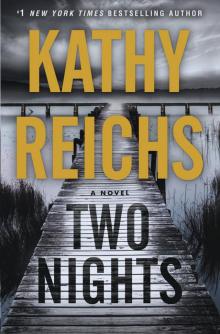 Two Nights
Two Nights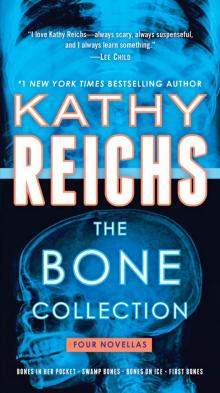 The Bone Collection: Four Novellas
The Bone Collection: Four Novellas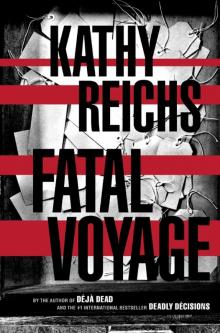 Fatal Voyage
Fatal Voyage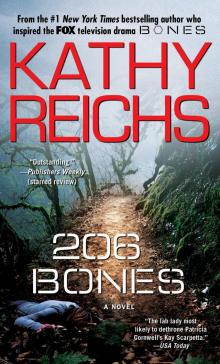 206 Bones
206 Bones Bones to Ashes
Bones to Ashes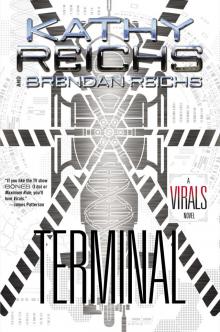 Terminal
Terminal Monday Mourning
Monday Mourning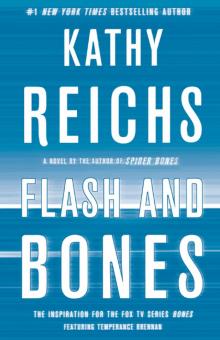 Flash and Bones
Flash and Bones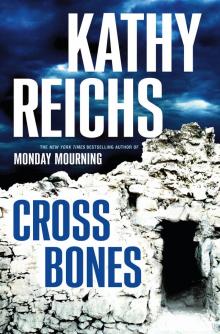 Cross Bones
Cross Bones Devil Bones
Devil Bones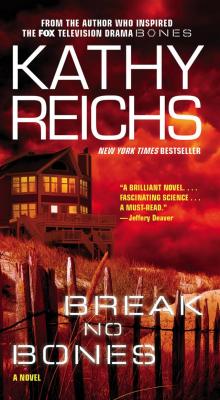 Break No Bones
Break No Bones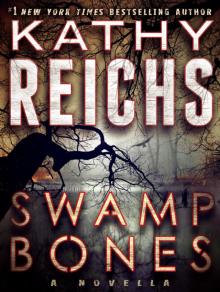 Swamp Bones
Swamp Bones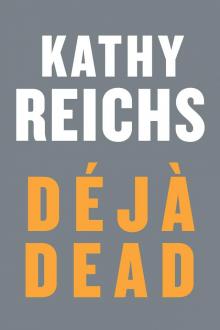 Déjà Dead
Déjà Dead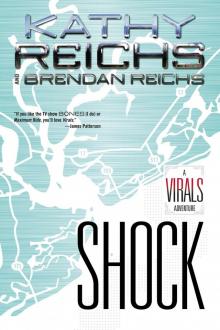 Shock
Shock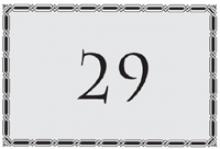 Spider Bones
Spider Bones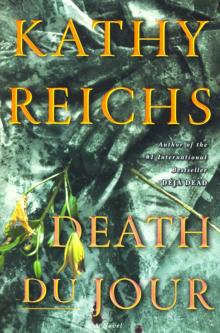 Death Du Jour
Death Du Jour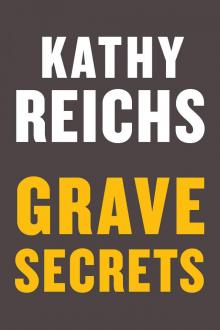 Grave Secrets
Grave Secrets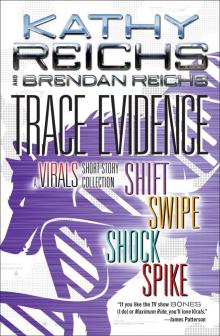 Trace Evidence: A Virals Short Story Collection
Trace Evidence: A Virals Short Story Collection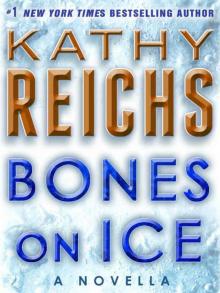 Bones on Ice
Bones on Ice The Bone Code
The Bone Code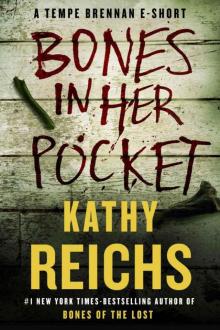 Bones in Her Pocket
Bones in Her Pocket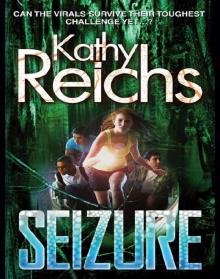 Seizure:
Seizure: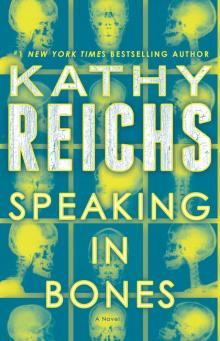 Speaking in Bones
Speaking in Bones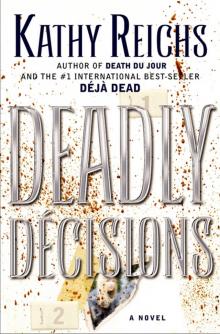 Deadly Decisions
Deadly Decisions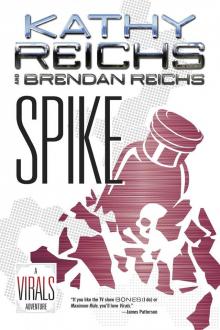 Spike
Spike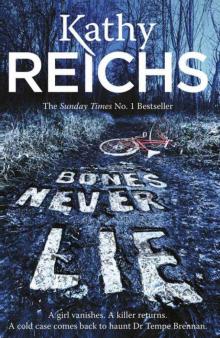 Bones Never Lie
Bones Never Lie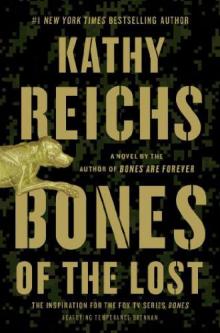 Bones of the Lost
Bones of the Lost Virals 03.5 - Swipe
Virals 03.5 - Swipe Exposure
Exposure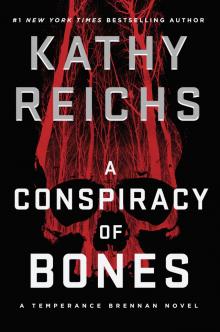 A Conspiracy of Bones
A Conspiracy of Bones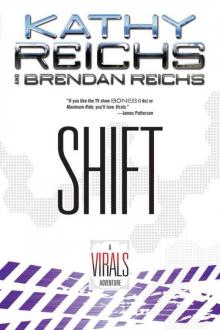 Shift (tory brennan)
Shift (tory brennan)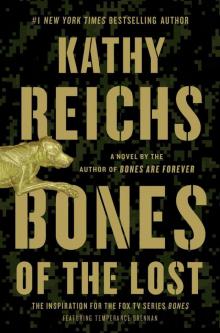 Bones of the Lost: A Temperance Brennan Novel tb-16
Bones of the Lost: A Temperance Brennan Novel tb-16 Virals tb-1
Virals tb-1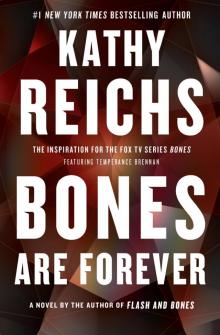 Bones Are Forever tb-15
Bones Are Forever tb-15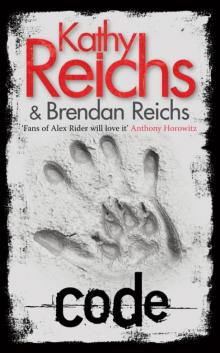 Code tb-3
Code tb-3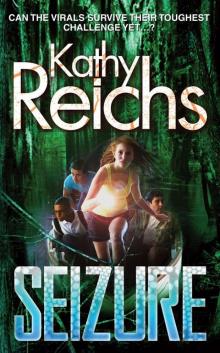 Seizure tb-2
Seizure tb-2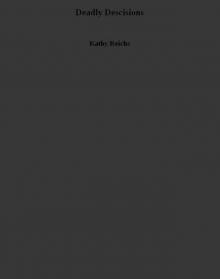 Deadly Descisions
Deadly Descisions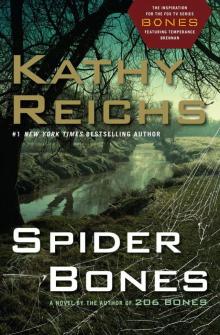 Spider Bones: A Novel
Spider Bones: A Novel